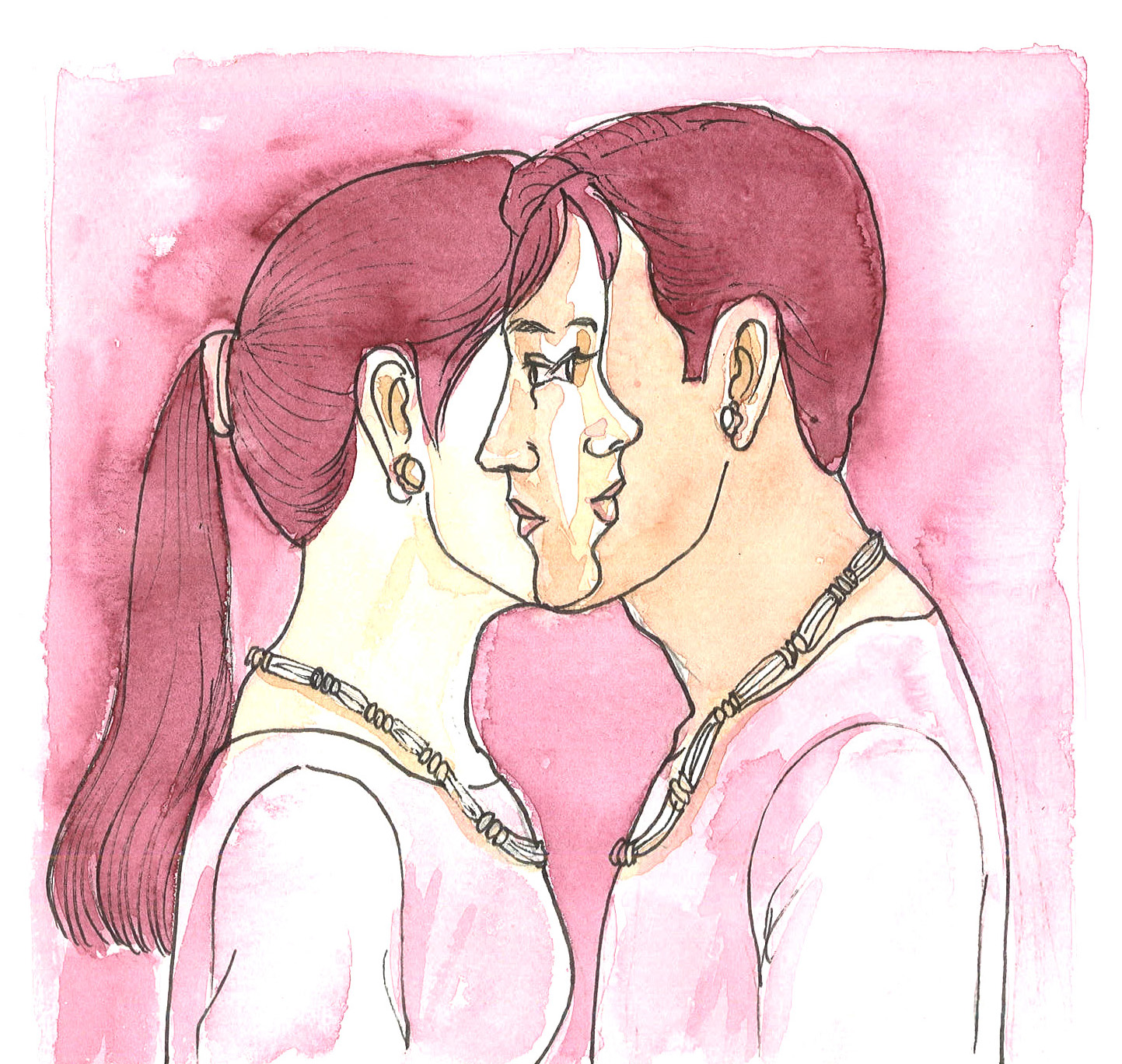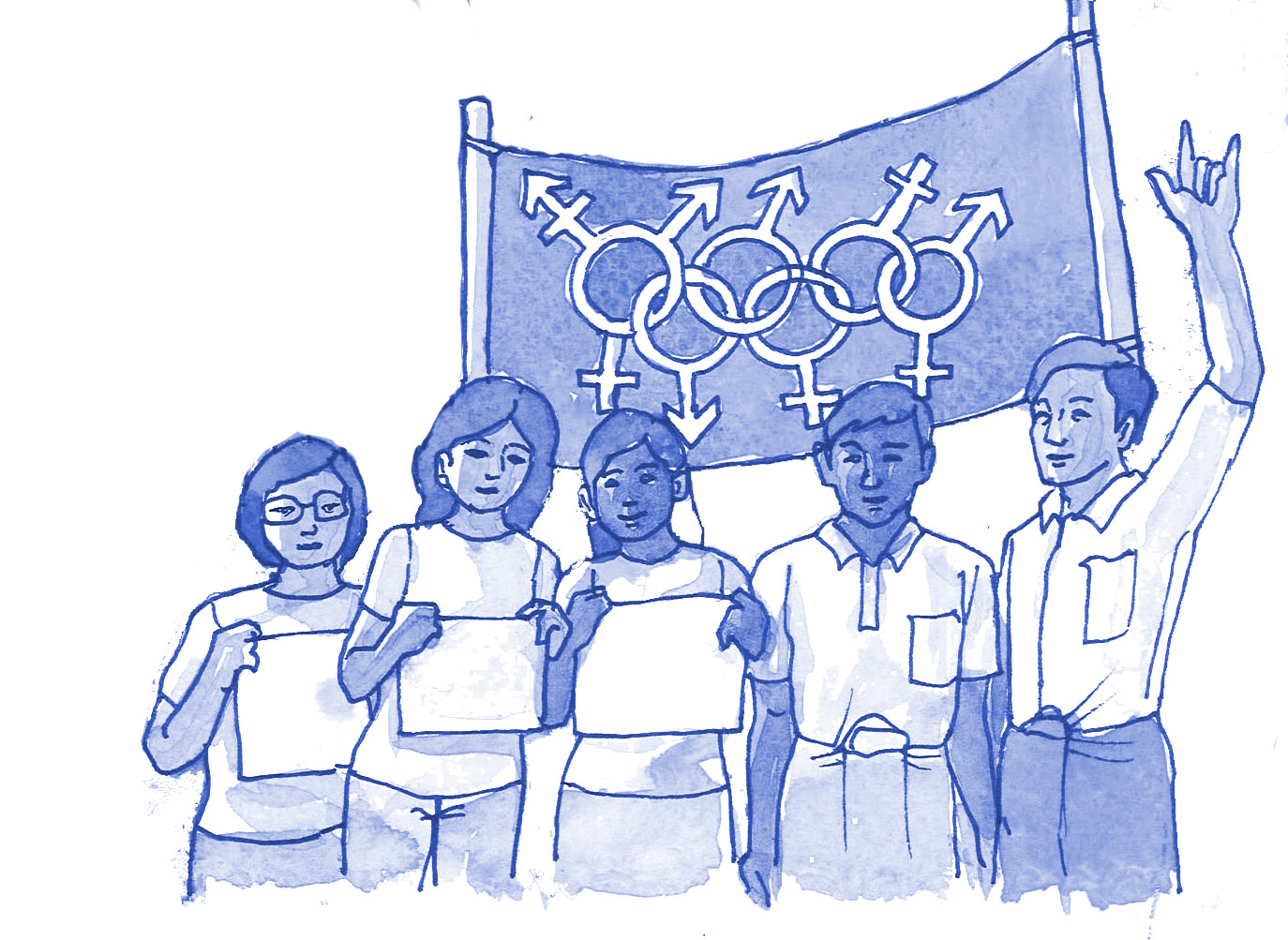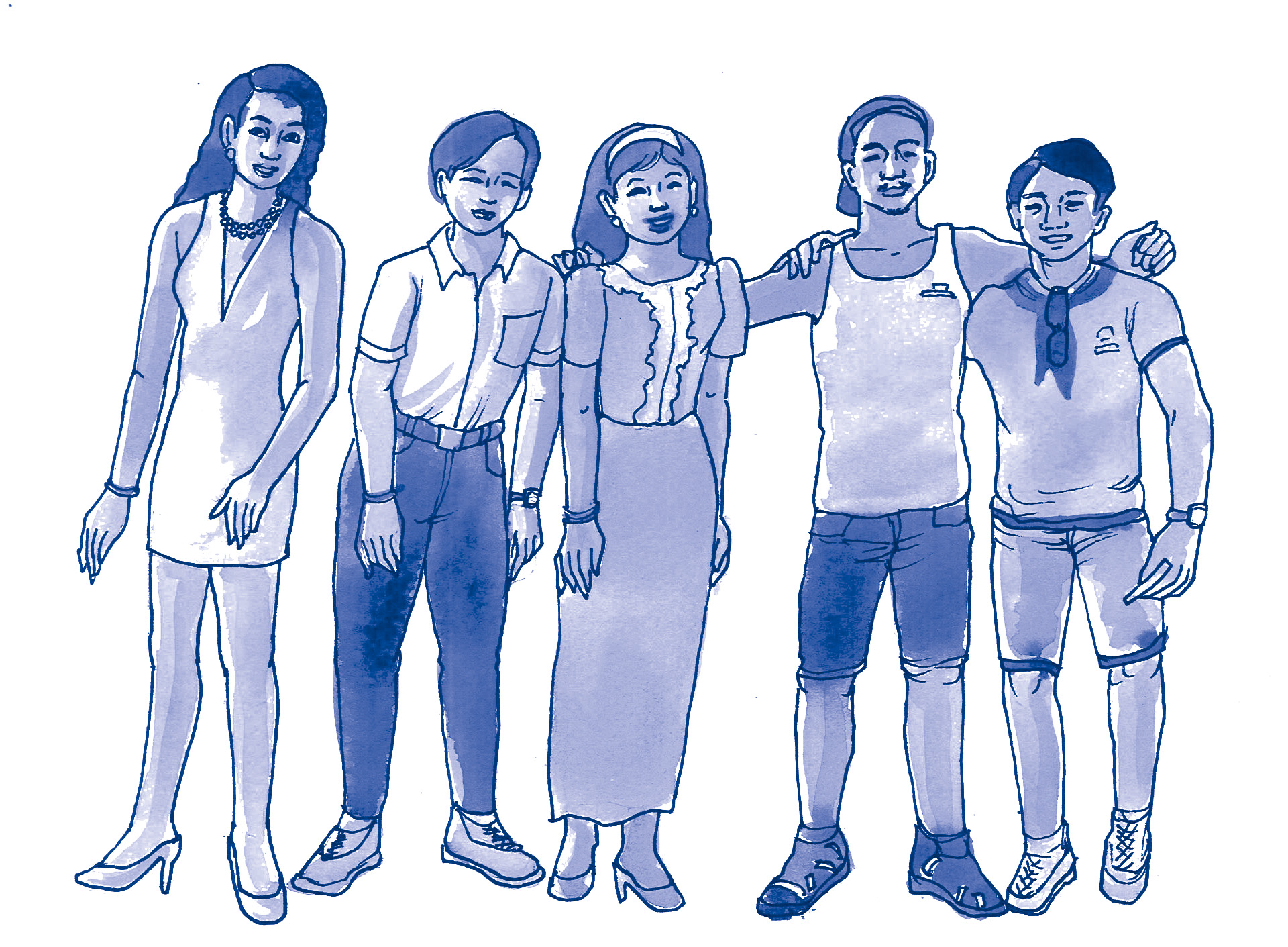Preview: What is the difference between ‘biological sex’, ‘gender identity’, and ‘gender expression’?
အမျိုးသားရေးဝါဒီ
လှုပ်ရှားသွားလာနိုင်မှု
အမွေအနှစ်
ကိုလိုနီဝါဒ
SOGIE means Sexual Orientation, Gender Identity and Expression. This learning resource focuses on SOGIE minority groups. This refers to people whose sexual orientation, gender identity and/or expression is different from those of the majority group. These groups are sometimes also referred to as ‘LGBT’ (lesbian, gay, bisexual and transgender) and the ‘LGBT community.’
Biological sex depends on what body parts (genitals and reproductive organs) and chromosome pattern a person is born with. A child can be classified as a boy, girl or as intersex. An intersex child has body parts that both boys and girls have. Their chromosome pattern might also be different from that of boys and girls.
အမျိုးသားရေးဝါဒီ
လှုပ်ရှားသွားလာနိုင်မှု
အမွေအနှစ်
ကိုလိုနီဝါဒ

Sexual Orientation
Sexual orientation is about who you are attracted to and want to have a sexual relationship with. It is part of a person’s identity.
Sexual practices are activities that have a sexually arousing effect. Sexual practices do not necessarily define a person’s sexual orientation. Sexual orientation is based on self-identification, regardless of what sexual practices a person does.
Lesbian describes a person who identifies as a woman who is sexually attracted to other women.
Gay most often describes a person who identifies as a man who is sexually attracted to other men. Some lesbians also call themselves gays.
Bisexual describes a person of any biological sex or gender identity, who is sexually attracted to persons of their own and another gender identity. For example, a woman might be sexually attracted to other women as well as men, or a man might be sexually attracted to both other men as well as transgender persons.

Gender and Gender Expression
Gender identity is a deeply held identity that individuals feel a strong connection with. A gender identity can match with the biological sex of a person. For example, a person might have been born with a female sex and may also identify as a woman as an adult. A majority of people have a gender identity that matches with their biological sex. Transgender persons have a gender identity that is different from their biological sex. People’s self-identification is important to define their gender. Some people may not show or tell their gender identity openly.
Gender expression is how a person shows their gender identity. In a society, there are often ideas shared by many people about what is considered masculine (related with a male gender identity) and what is considered feminine (related with a female gender identity). Gender expression is often shown in things like people’s choice of names and pronouns, talking style, body gestures, hair and clothing.
Transgender is an umbrella term. A transgender person may identify as a transvestite, which is a person who wears clothes and other accessories that are not typically related to their biological sex. A transgender person may identify as transsexual, which is a person who seeks to change or has changed their body to be more in alignment with their gender identity. They may do so with the support of hormones or surgery. Some persons may identify as transmen or transwomen , or simply as men and women if they do not want to emphasise their transgender identity. Gender fluid describes a person who has several gender identities and who shows them through various gender expressions.
There are many more categories of transgender identities, and they all have in common that they are related with gender identity and/or expression, not sexual orientation.
There are also many more categories of SOGIE minority groups. What they have in common is that they are related with either sexual orientation, gender identity or expression, and that they refer to minority groups.
myth or reality?
Activity
There are many common beliefs about genders as well as the LGBT community. Read the following common beliefs and identify if you think each is a myth (false) or a reality (true).
Hover over the text to see the answer
- Women are more talkative than men.
- Men are more competitive than women.
- Women and men experience the same levels of emotion.
- The cause of sexual orientation is unknown.
- Early sexual experiences prove one’s sexual orientation as an adult.
- It is possible to tell who is a member of a SOGIE minority group by their physical characteristics and behaviours.
- In same-gender relationships between two partners, one partner usually plays the masculine role and the other one plays the feminine role.
- AIDS (Acquired Immunodeficiency Syndrome) is a disease that only gays have.
- Youth cannot know their sexual orientation or gender identity because they are too young.
- Being transgender is the same as being gay.
- Being gay is a lifestyle choice.
- Sexual orientation can be cured.
Reflection/Discussion
- How many of the common beliefs did you correctly identify? Why do people believe in and spread myths about genders and the LGBT community?
- How did you learn what gender is and how you can express it?
Focus on Myanmar:
SOGIE MInority Groups and Terms in Myanmar

Advocacy within and for the LGBT community in Myanmar has increased over the past few years. In 2019, activists in Myanmar got together to identify what SOGIE terms they believed would be most appropriate and respectful of self-identification within the LGBT community. This was an attempt to help standardise SOGIE terms contextual to Myanmar and in Burmese language. These are some of the terms they proposed (CAN Organisation n.d.)
| English | Burmese |
|---|---|
| Gender | ဂျဲန်ဒါ |
| Gender Identity | ကိုယ်ပိုင်လိင်ဝိသေသခံယူချက် |
| Gender Expression | ကိုယ်ပိုင်လိင်ဝိသေသလက္ခဏာ ဖော်ပြချက် |
| Gender Role | လိင်ဝိသေသ စံသတ်မှတ်ချက် |
| Gender Fluid (Person) | မိမိခန္ဓာကိုယ်တွင် ကျားမဝိသေသလက္ခဏာ ရောယှက်ဖော်ပြမှု အတိအကျမရှိသူ/ပြောင်းလဲနေသူ |
| Transgender (Person) | ဆန့်ကျင်ဘက်လိင်သို့ ပြောင်းလဲပြုမူနေထိုင်သူ |
| Transsexual (Person) | ဆန့်ကျင်ဘက်လိင်သို့ ပြောင်းလဲရန် ဆေးကုသမှု စတင်ခံယူနေသူ/ခံယူဆဲသူ/ခံယူအောင်မြင်ပြီးသူ |
| Sexual Orientation | လိင်စိတ်တိမ်းညွတ်မှု/လိင်ဝိသေသခံယူမှု/ဖော်ပြမှုနှင့် လိင်ဝိသေသလက္ခဏာ (ဆိုဂျီ) |
| Homosexuality | လိင်ဝိသေသ (လက္ခဏာ) ဖော်ပြချက်နှင့် အမူအကျင့်တူညီသူချင်း ချစ်ခင်စုံမက်မှု (သို့) လိင်တူလိင်စိတ်တိမ်းညွတ်မှု |
| Bisexuality | လိင်တူလိင်ကွဲနှစ်မျိုးလုံးအပေါ် ချစ်ခင်စုံမက်ခြင်း |
| Asexual (Person) | လိင်စိတ်တိမ်းညွတ်မှု နည်းပါးခြင်း/ကင်းမဲ့သူ |
| Masculinity | အမျိုးသားဆန်ခြင်း |
| Femininity | အမျိုးသမီးဆန်ခြင်း |
| Sexual Orientation, Gender Identity, Expression, and Sex Characteristics | လိင်စိတ်တိမ်းညွတ်မှု/လိင်ဝိသေသခံယူမှု/ဖော်ပြမှုနှင့် လိင်ဝိသေသလက္ခဏာ (ဆိုဂျီ) |
| LGBTI | လိင်စိတ်/လိင်ဝိသေသလက္ခဏာ တိမ်းညွတ်ခံယူဖော်ပြမှု ကွဲပြားသူများ |
| Lesbian / Women who Have Sex with Women (WSW) | အမျိုးသမီးချင်း ချစ်ခင်စုံမက်သူ/အမျိုးသမီးချင်းကြိုက်သူ |
| Gay / Men who Have Sex with Men (MSM) | အမျိုးသားချင်း ချစ်ခင်စုံမက်သူ/အမျိုးသားချင်းကြိုက်သူ |
| Intersex (person) | အင်တာဆက်စ် |
| Cross-dresser | အခြေအနေ အချိန်အခါအရ ဆန့်ကျင်ဘက်လိင်သို့ ပြောင်းလဲဝတ်စားဆင်ယင်သူ |
When referring to members of the LGBT community, it is important to use terms that the community finds respectful. It is additionally important to recognise each member’s right to self-identification. When in doubt, it can be appropriate to ask a member of the LGBT community what terms they would like to be used.
Activity
Imagine you work for an organisation that wants to start a campaign to educate others about these terms. What would you do in your campaign? Brainstorm activities you could do as part of the campaign.
အမျိုးသားရေးဝါဒီ
လှုပ်ရှားသွားလာနိုင်မှု
အမွေအနှစ်
ကိုလိုနီဝါဒ